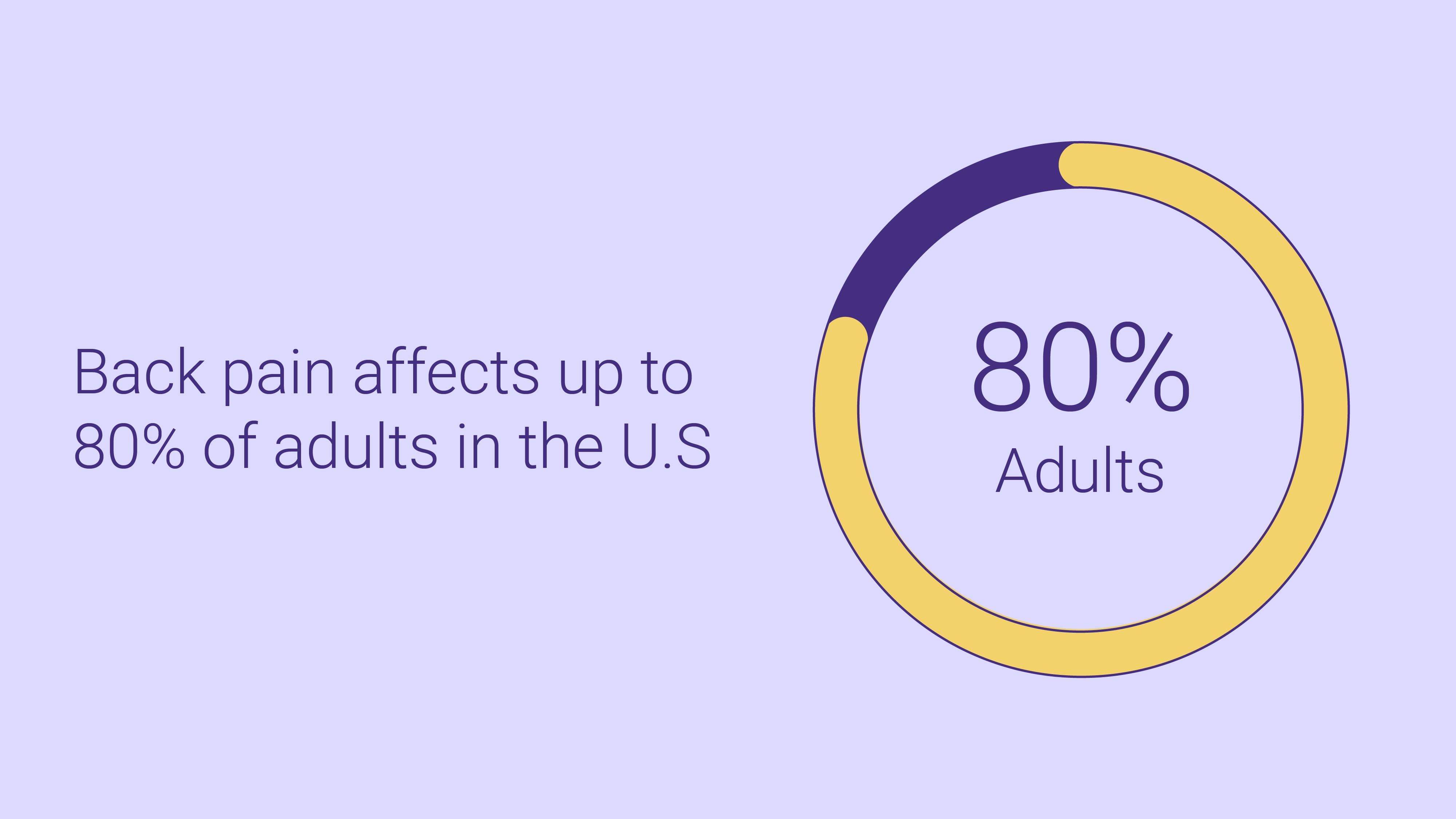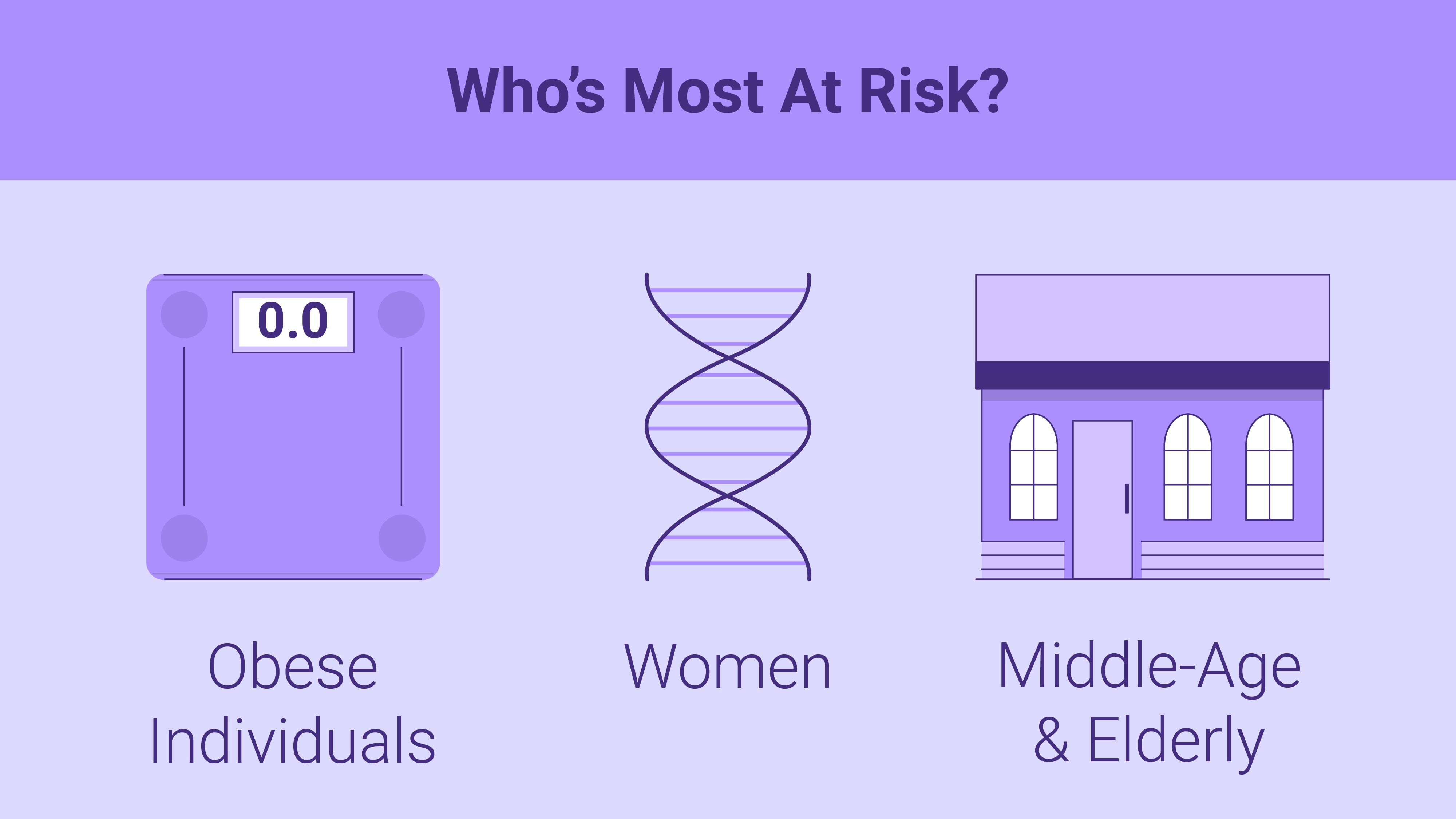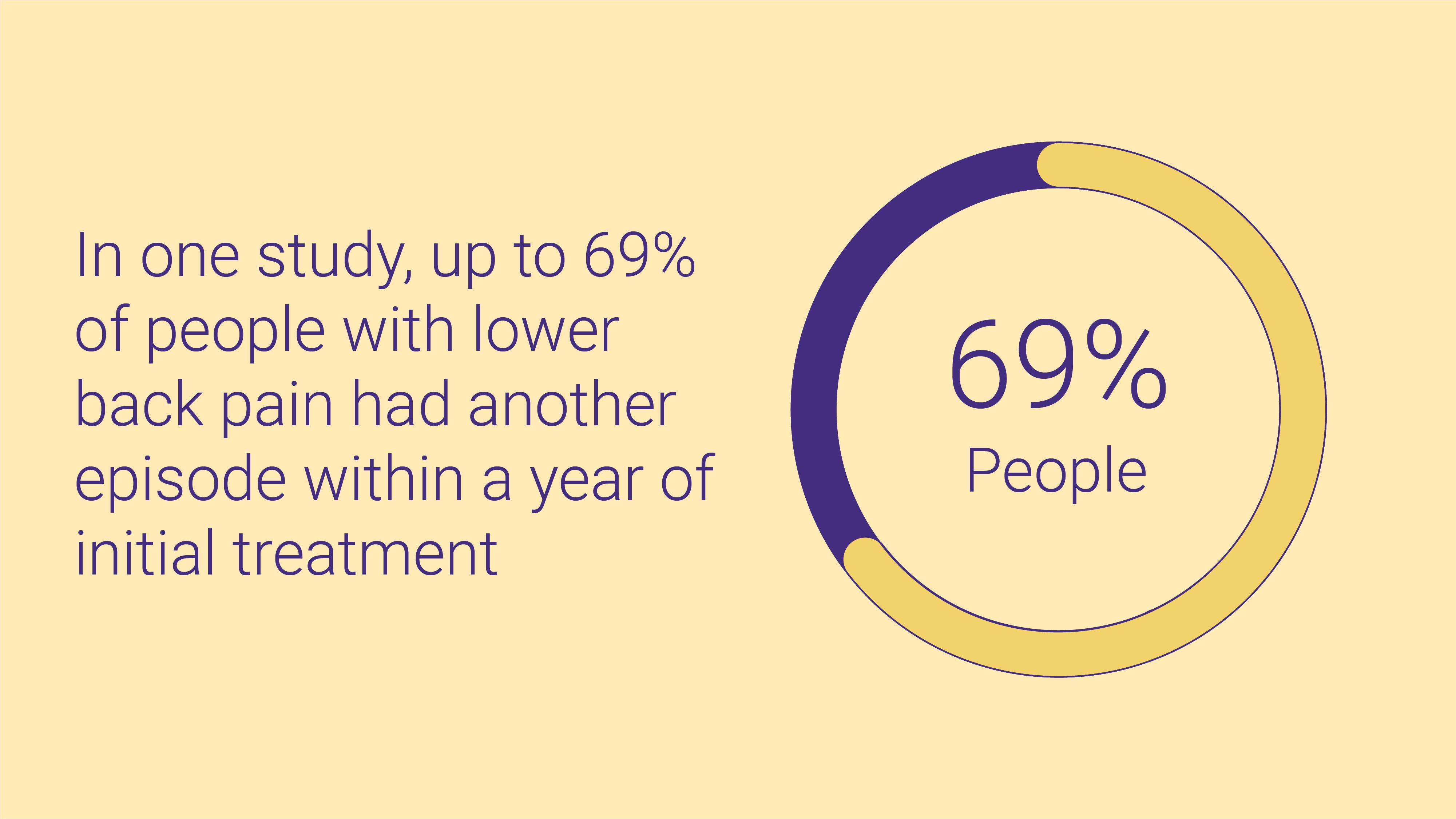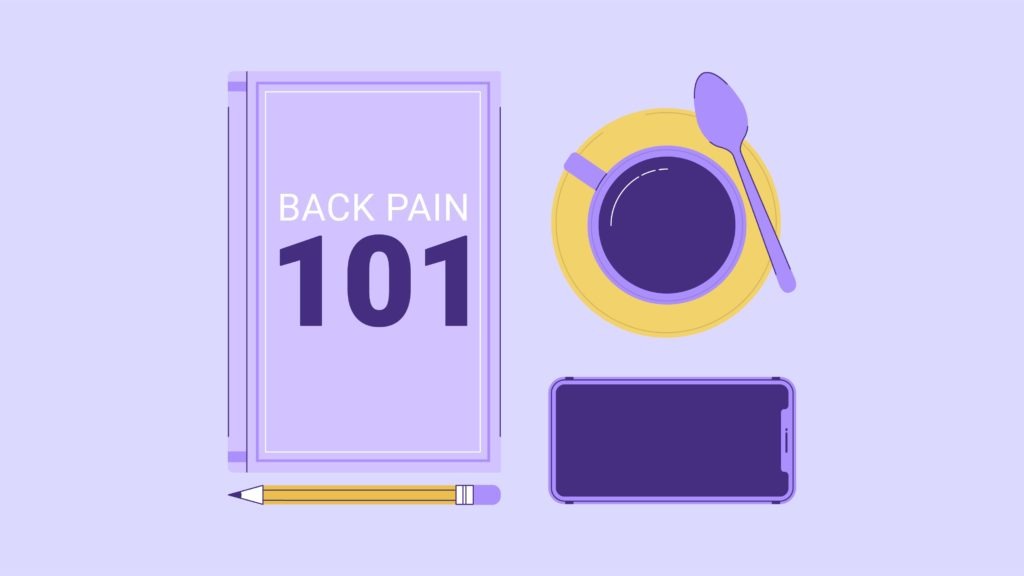Chances are, at some point, you’ve experienced back pain. In fact, up to 80% of adults in the US will encounter this discomfort at some point, from dull aches to incapacitating spasms and pain.
The Mayo Clinic estimates 15% to 20% of adults experience back pain each year. That’s nearly one in five people, meaning it’s quite a significant problem. And, its prevalence appears to be increasing. One study from North Carolina found chronic back pain reports doubled between 1992 and 2009. The increase was seen across genders, ethnicity, and ages.
Another global study found a 54% increase in chronic back pain disability between 1990 and 2015. Even amongst teenagers, back pain is on the rise. One Brazilian study of high school students found nearly half of the participants reported back pain.
Study researchers attribute this to both mental health problems and lifestyle habits. Students watching over three hours of TV, using laptops and tablets, and prolonged cell phone use reported more back pain.

More than a minor inconvenience, back pain often affects daily activities, mood, and routine. From impairing work to trouble sleeping, pain can cause ripple effects and may even amplify stress and depression. Back pain also represents the leading cause of disability worldwide. As a public health concern, back pain is estimated to cost $100 billion per year in the U.S. alone. Much of the cost is due to healthcare, missed wages and insurance for those affected. So, what is causing this massive problem? Let’s take a look at the basics of back health along with primary causes of and ways to alleviate back pain.
Back to the Basics of Back Pain Statistics
To better understand the back pain problem, it can be helpful to take a closer look at the mechanics. The back is composed of the spine, nervous system, and muscles. All of parts components work together, and inflammation in any of these areas can cause back pain.
The Spine
The spine consists of a series of vertebrae separated by discs. Its design protects the spinal cord while allowing for flexibility.
- Vertebrae: These bones protect the spine. The spine is divided into four main sections.
- Cervical spine: vertebrae C1 to C7. This is the area of the neck. The cervical spine supports the head, protecting the nerves that go from the brain to the rest of the body.
- Neck pain is most often due to muscle or ligament strains.
- Thoracic spine: vertebrae T1 to T12. This area comprises the upper back. These vertebrae attach to the rib cage to protect vital organs. This area has little range of motion.
- Because there is less wear and tear, the upper spine is not injured as often as the lower back.
- Lumbar spine: vertebrae L1 to L5. This area is the lower back. The lumbar region supports the weight of the whole torso. It also has a wider range of motion.
- The lumbar region tends to experience the most wear and tear in the spine. Thus, it is more prone to degeneration and strain. The majority of back pain occurs in the lumbar area.
- Sacral region: the base of the spine. The sacrum bone sits below the lumbar spine, connecting to the pelvis. The bottom of the spine is the coccyx, or tailbone. Because there is less flexibility in this region, it is less commonly associated with back pain. Trauma or injuries are the most likely cause of pain in the sacral and tailbone areas.
- Women are more likely than men to experience sacral joint and tailbone pain. This is due to anatomical differences and childbirth.
- Cervical spine: vertebrae C1 to C7. This is the area of the neck. The cervical spine supports the head, protecting the nerves that go from the brain to the rest of the body.
- Intervertebral Discs: These rubbery-like pads sit between the vertebrae to cushion and absorb motion. The discs help hold the structure of the spine and protect bony vertebrae. The spine contains 23 discs between the vertebrae.
- Discs have a tough exterior composed of collagen layers. The interior is gel-like, helping to distribute and absorb pressure.
- With age or injury, the discs can stiffen a bit. For some people, disc degeneration may lead to pain, inflammation, and limited range of motion.
- Facet Joints: In between and behind most vertebrae, there are also facet joints that allow for stabilized movement.
- These joints prevent over-extension and excessive twisting. Without them, bending or twisting too far could damage the spine.
- Facet joints are coated by a thin layer of cartilage to protect them as they slide across each other. They are also surrounded by a small capsule that provides lubrication.
- Age-related degeneration, inflammation or injuries to the joints can all be sources of discomfort. Inflammation, in particular, can trigger spasms in nearby back muscles, affecting posture and causing pain. Pain-related to facet joints tends to appear more locally than nerve pain. There may also be more discomfort when leaning backward than forward.
The Nervous System
The spinal cord connects to the brain stem. The body’s nervous system radiates from 31 pairs of nerves connected to this vital core. These nerves send signals between the brain and body, allowing us to sense and move. Think of it as the body’s electrical control system. The nerve roots extending from the spinal cord are segmented much like the vertebrae. There are eight cervical nerves, twelve thoracic nerves, five lumbar nerves, five sacral nerves and one coccygeal nerve. These nerves radiate out from the spinal cord through the space around the discs. When discs become herniated, they tend to be in the area beneath the nerve root. In addition to neck and back pain, herniated discs can cause pain or numbness in arms or legs because of the associated nerves. Pinched nerves are most likely to occur in the lower back or the neck.
- In the lower back, nerves at the L5 or S1 vertebrae are the most commonly affected.
- The nerve at the L5 vertebrae runs over the top of the foot. It is connected to the big toe and muscles that raise the foot.
- The nerve at the S1 vertebrae runs down the back of the calf and outside of the foot. If it is impinged, there may be impaired ability to push the foot, numbness on the outside of the foot, or changes to the “ankle jerk” reflex.
- Pinched nerves in the cervical part of the spine involve those radiating out from the neck through the upper body. The areas most commonly affected are the nerves by vertebrae C5 to C8.
- If the C5 nerve is pinched, this is often associated with shoulder pain or numbness, weakness in the deltoid, or weakened bicep reflexes.
- The nerve at C6 can also cause bicep weakness, in addition to wrist and forearm weakness. A person may feel pain or numbness that runs down the arm to the thumb.
- A nerve pinched at C7 may cause pain or numbness running down the arm to the middle finger, in addition to tricep weakness.
- The nerve at C8 connects to the small muscles of the hands. A pinched nerve here can cause general dysfunction of the hand. It may also present as pain or numbness to the pinky and outside of the hand.
Pinched nerves are treated by seeking to remove the source of the impingement and reduce inflammation. The nerves are then allowed to heal. This process can be slow and fairly painful, as the nerves heal from the root down to the extremities.
The Muscular System
The muscular system supports the spine and keeps our body connected. The muscle tissues keep the body upright and allow us to move, bend and be active. Ligaments hold our vertebrae in place. Tendons attach them to the muscles, allowing everything to work together. In the back, there are three categories of muscles:
- Extensor muscles connect with the back of the spine, including the large muscle groups of the erector spinal and gluteal muscles. These muscles allow us to stand upright and lift things.
- Flexor muscles connect to the front of the spine. The muscles allow us to bend forward, arch the back, flex, and lift objects as well. Iliopsoas muscles connect the lower back to the thigh area. These muscles are primarily responsible for the hip flexor movement. They may contribute to back pain, especially when tight.
- Oblique muscles attach to the side of the spine. These muscles are important for maintaining posture and rotating the torso.
Muscles can contribute to back pain in a few ways.
- Aging and Inactivity. Without regular exercise, muscles in the back tend to weaken with age. Treating back pain related to muscles centers on building balanced strength and practicing ergonomic movement.
- Muscle imbalances. If one group of muscles is disproportionately weak, it can cause strain elsewhere in the body. Weak abdominal muscles may cause hip flexors to tighten, which can increase lower back curvature. Tight hamstring muscles may also contribute to low back pain (and vice versa).
- Extended back pain. When people experience extended back pain, they often try to avoid using those muscles or limit range of motion in that area. When the pain lasts for a couple weeks or more, this can lead to muscle wasting and weakness. In turn, this reduction of support can cause more back pain. Injuries to vertebrae, facet joints, and nerves may also trigger spasms in back muscles.
- Chronic stress. Stress can cause muscles to tense and tighten as part of the fight or flight response related to adrenaline and cortisol. When stress becomes chronic, this can deprive muscles of needed energy and lead to weakening.
- Lifestyle. Long bouts of sedentary activity levels, unhealthy posture, job-related muscle strain, and poor sleeping conditions can also affect muscles in the back.

What Causes Back Pain?
Back pain is a very complex condition involving numerous systems in the body. Because of this, it’s often difficult to pinpoint a single cause or treatment. For many people, pain results from injuries or strains. For others, it can result from repetitive motions, posture or occupational factors. Then, there are also conditions like pregnancy, osteoporosis, spinal disorders, obesity, nerve damage and many more that contribute to back pain.
A Look at Key Sources of Back Pain
The term “back pain” is a very broad catchall. There are a very wide range of injuries, illnesses, and conditions that all may have pain as a symptom. The National Institutes of Health list many, separating them into mechanical and underlying conditions.
Mechanical Conditions
These causes of back pain refer to mechanical problems with the function of the spine and muscular systems. The source of pain relates to one of the structures of the back.
- Sprains and strains. The majority of acute back pain falls into this category. This includes tears and overstretched ligaments, tendons and muscles. Improper or heavy lifting, twisting and overstretching can trigger pain and/or spasms.
- Degeneration of discs. The discs that cushion the vertebrae may deteriorate over time. Another common cause of back pain, degeneration of discs may impair flexibility and movement.
- Ruptured or herniated discs. The spinal discs can also bulge outward due to compression. This can cause painful herniation or rupture. If left untreated, rare complications like cauda equina syndrome can cause permanent nerve damage.
- Radiculopathy. Spinal nerve roots may become compressed, damaged or inflamed. Pressure on these nerve roots can cause radiating pain, tingling or numbness. Common causes are herniated discs and stenosis.
- Sciatica. This refers to the radiculopathy of the sciatic nerve. This nerve runs from the bottom down the back of the legs. Burning or shock-like pain may radiate down one leg, even reaching the foot. Numbness and weakness may be present.
- Spondylolisthesis. This condition involves a portion of the spine slipping out of alignment. This displacement pinches nerves, causing pain.
- Traumatic injuries. Impacts from falls, sports, car accidents, and other trauma may injure muscles, ligaments, vertebrae, and discs. Injuries can also cause spinal compression, pinching nerves or damaging discs.
- Spinal stenosis. Stenosis refers to the narrowing of the spinal column. Increased pressure on spinal cord nerves can cause pain, numbness, and weakness over time.
- Skeletal abnormalities. Congenital irregularities like scoliosis or lordosis affect the curvature of the spine. These types of conditions can cause strain and pain, but may not become apparent until middle age.
Underlying Conditions
Our torsos contain most of our vital organs and a complex network of nerves. Several conditions not directly affecting the spine may still result in pain felt in the back.
- Kidney stones. Sharp pains, particularly on one side of the back, are often felt with kidney stones.
- Inflammatory joint diseases. Arthritic conditions like osteoarthritis, rheumatoid arthritis, and spondyloarthritis increase the risk of back pain.
- Osteoporosis. This disease affects the bones, progressively decreasing bone density and strength. It can predispose people to fractures and damage to vertebrae.
- Endometriosis. Build-up of uterine tissue in the abdomen can cause pain that radiates to the lower back.
- Fibromyalgia. This condition involves widespread chronic pain, often felt in the back and other places.
- Abdominal aortic aneurysm. The main blood vessel supplying blood to the torso can become enlarged, causing pain.
- Infections. Infections in the area of the back are another potential cause of back pain. Infections of the vertebrae, discs, or the joints connecting the spine and pelvis are rare but possible.
- Tumors. Tumors can sometimes appear in the back or spread from elsewhere, triggering pain.
- Pregnancy. Strain on the back muscles due to changes in weight and the biological changes of pregnancy can cause pain. About half of pregnant women experience lower back pain.
Classifying Low Back Pain
Back pain history and symptoms are typically evaluated during an initial exam to pinpoint potential causes. Current and past health conditions and a physical exam often provides enough information for doctors. If stenosis, tumors, injured bones or disc injury are suspected, your doctor may order X-rays or a variety of imaging scans. Blood tests may also be used to look for inflammation markers or signs of reactive arthritis. The pain is typically classified by how long it lasts.
- Acute Low Back Pain: The majority of people experience brief bouts of pain, lasting between a few days to a few weeks. This is often triggered by an injury to a muscle or disc, strain, or nerve.
- Subacute Low Back Pain: When symptoms last a little longer, it’s classified as subacute. This includes episodes lasting four to twelve weeks.
- Chronic Back Pain: When pain lasts longer than three months, it’s referred to as chronic. This includes symptoms that persist after an acute injury or cause is treated. The Mayo Clinic says that up to 20% of people with acute pain may develop chronic pain within a year.
Who’s Most at Risk?
Back pain can affect virtually anyone at any time. People of all ethnicities, genders, and ages experience it. Some of the most prominent risk factors for this condition include:

- Gender: Both men and women experience back pain at similarly high rates overall. Women are slightly more likely to experience back pain though, particularly teenage girls and post-menopausal women.
- Age: Middle-age and elderly people are more likely to have back pain. However, it can affect people of any age, including teens.
- Weight: Excess weight and obesity place greater strain on the spine.
- Sedentary Lifestyle: Weak abdominal and back muscles may lead to pain.
- Lifting Technique: Lifting heavy objects with improper form is a common cause of strain. The legs should do most of the work, rather than the back.
- Disease: Some conditions like arthritis and cancer increase the risk of pain.
- Psychological conditions: Depression and anxiety are linked with a higher incidence of back pain. Studies have found that improving pain often tends to improve depression. Interestingly enough, improving depression also appears to reduce people’s perceived severity of pain.
Back Pain Treatments
The complex mechanical nature of the back and the wide range of causes means identifying the cause of back pain can be tricky. In some cases, multiple factors may be at play. Back pain also has a high recurrence rate. For example, one study found that up to 69% of people who sought treatment for low back pain reported another episode within the following year.

Treating back pain usually focuses on mitigating discomfort, correcting lifestyle or health factors and preventing future episodes. Multiple options may be used to see what your body will respond to best. The National Institutes of Health provides an overview of current treatment methods, which include:
- Hot or cold compresses may be used to reduce inflammation but have not been proven to provide long-term pain mitigation.
- People with back pain are usually advised to resume activity as soon as possible. The care provider may recommend stretches or avoiding certain aggravating movements. However, research shows that prolonged bed rest can negatively affect flexibility after an episode of low back pain. Bed rest may also increase perceptions of pain and cause other health concerns.
- For long-term back pain, treatment may focus on exercises that strengthen muscles. This can be important for improving posture, coordination, and balance. Providers may include a list of stretches or physical therapy interventions that have shown to be effective.
- Medications are also commonly offered for pain management. These can include over-the-counter analgesics and anti-inflammatory drugs, antidepressants for chronic stress-related pain, topical irritants that provide a heating or cooling sensation, or other prescription pain relievers.
- Chiropractic care involves mobilizing and adjusting the spine and surrounding muscles using manual manipulation. It has been shown to provide benefit to people with chronic pain, but the evidence is minimal. It also is likely not an ideal treatment for those with arthritis, osteoporosis or compression problems.
- Nerve blocking therapies work by stopping a nerve’s ability to relay pain signals to the body. These can include injecting local anesthetics, steroids or other substances into targeted tissues or joints, or sometimes the spinal cord directly. Lower back pain and sciatica may be treated with epidural steroid injections. These injections are typically recommended only for short term use and not long-term, chronic pain management.
- Transcutaneous electrical nerve stimulation uses a device with electrodes placed on the skin. The nodes are placed around the area of pain and the impulses are meant to block pain signals. Studies have shown mixed results.
- Surgery is usually considered a last resort for treating back pain. In addition to being complex, back surgery can require extensive healing times. Success at eliminating pain is often limited as well. There are many types of surgeries and surgical treatments for different causes of back pain. Appropriate options depend on whether the pain is a result of discs, vertebrae, nerves, compression or other causes.
- One other interesting method of managing pain involves focusing on managing mental aspects with Cognitive Behavioral Therapy. Our beliefs and fears toward pain can alter our perception and intensity of it. One study of cognitive therapy targeting fear of low back pain showed improvements after six months. Another study found that cognitive functional therapy helped reduce disability more than group-based education and exercise.
The right treatment method will depend on what is causing your back pain, the severity of the pain, and how long you have been experiencing problems. Your caregiver can work with you to determine which approaches may be suitable for you.
The Back Pain and Sleep Connection
The relationship between pain and sleep is a complex one. Feeling pain makes it harder to get comfortable and sleep well. On the other hand, poor sleep appears to increase sensitivity to pain. This can create a very unpleasant cycle for many people. Poor sleep quality is often associated with increased perceptions of pain. Sleep quality influences mood and stress levels as well, which also affect pain ratings.
One study found that sleep disturbance predicted less improvement in pain following treatment. Those with normal sleep were more likely to report improved pain during treatment. If you’re experiencing back pain, take a close look at your sleeping habits and sleep environment. First and foremost, make sure you are allowing enough time each evening for adequate sleep.
The average adult needs between seven to nine hours each night. If you have a hard time falling asleep, head to bed a little earlier to give yourself time to relax and get comfortable. Certain sleeping positions can make pain worse, too. Sleeping in a healthy position to reduce back pain promotes a healthier spine and helps eliminate future aches and pains.
The condition and comfort level of mattresses and pillows can also play a role in pain. Beds that are unsupportive of the spine’s natural shape may cause pain. Overly firm and overly soft mattresses can leave the lumbar area unsupported and cause misalignment with hips and shoulders. Pillows that do not properly support the neck and sleep position can trigger neck, shoulder and upper back pain as well.
If you commonly experience back pain, replacing your bed with the best mattress for back pain is a good first step towards eliminating discomfort.
Staying Healthy and Preventing Back Pain
Taking care to move and work ergonomically is a key prevention strategy, as many back pain complaints arise from the workplace or from lifestyle.
- Pay attention to posture and slouching, both when standing and sitting.
- Surfaces you use often like desks and countertops should be at a comfortable height.
- Office and task chairs should provide adequate lumbar support. A footrest may reduce lower back pressure while sitting as well.
- If you do sit for long periods, take regular breaks to walk around and stretch.
- Before engaging in physical activity, stretch.
- Practice proper lifting techniques at work, home, and the gym. The National Institutes of Health offer the following pointers: “Lift from the knees, pull the stomach muscles in, and keep the head down and in line with a straight back. When lifting, keep objects close to the body. Do not twist when lifting.”
Following typical healthy lifestyle advice is also useful for preventing back pain, like staying active, eating a balanced diet, and sleeping on the best mattress for your needs. Physical activity keeps muscles strong and bodies flexible.
Eating a balanced diet prevents excess weight gain, and includes nutrients for healthy bones. Buying a comfortable mattress prevents discomfort stemming from an unsupportive bed and nurtures a healthy spine.
This article is for informational purposes and should not replace advice from your doctor or other medical professional.

The Conversation (0)
Start a discussion, our content team tries our best to respond to comments. However replies should not be a substitute for medical advice from your doctor.*